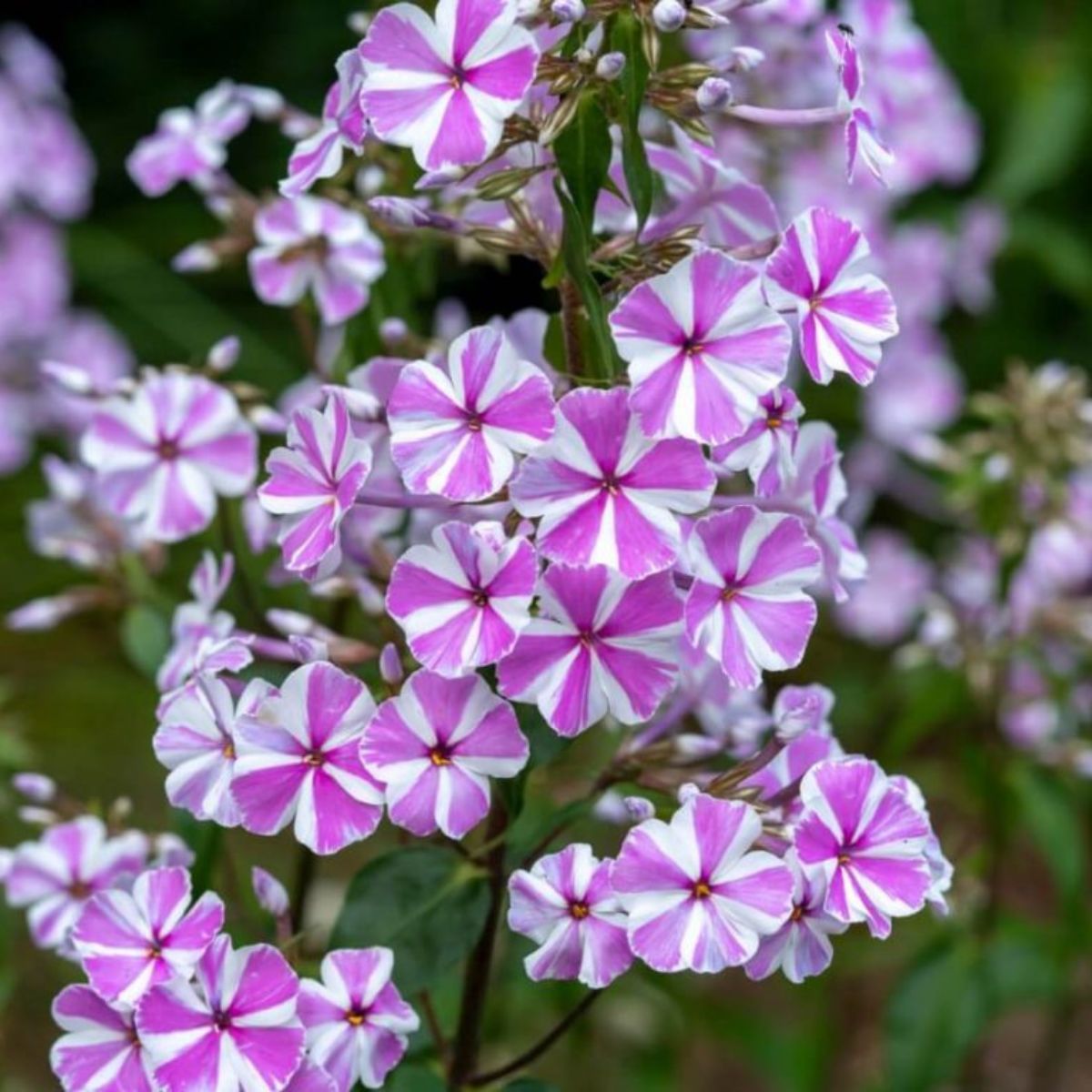Why Phlox Plants Need to be Propagated
Phlox plants are known for their rapid growth and ability to spread quickly, making them a popular choice for gardeners. However, this rapid growth can also lead to problems if not managed properly. Without regular propagation, phlox plants can outcompete native species, leading to an imbalance in the ecosystem. Additionally, phlox plants require regular division to maintain their health and vigor. If left unchecked, they can become congested, leading to a decrease in flower production and overall plant performance. Learning how to propagate phlox plants is essential to control their spread, promote healthy growth, and encourage blooming. By understanding the importance of propagation, gardeners can enjoy the benefits of these beautiful flowers while maintaining a balanced and thriving garden ecosystem.
Understanding Phlox Plant Propagation Methods
When it comes to propagating phlox plants, there are several methods to choose from, each with its own advantages and disadvantages. Learning how to propagate phlox plants effectively requires understanding the different methods and selecting the best approach for your specific needs. The three main methods of propagating phlox plants are division, stem cuttings, and seed propagation. Division involves separating established plants into smaller sections, allowing gardeners to create new plants with the same characteristics as the parent plant. Stem cuttings involve taking cuttings from the stems of phlox plants and rooting them to create new plants. Seed propagation, on the other hand, involves sowing seeds to produce new plants. Each method has its own unique benefits and drawbacks, and understanding these differences is key to successful phlox plant propagation.
How to Prepare Phlox Plants for Propagation
Before attempting to propagate phlox plants, it’s essential to prepare them properly to ensure successful propagation. This involves pruning, digging, and cleaning the roots. Pruning is a critical step in preparing phlox plants for propagation, as it helps to promote healthy growth and encourages the plant to focus its energy on producing new roots and stems. To prune phlox plants, simply cut back the stems to about 6-8 inches from the ground, making sure to remove any dead or damaged foliage. Next, dig up the phlox plant, taking care not to damage the roots. Gently wash the roots to remove any dirt or debris, and trim away any dead or damaged roots. This will help to prevent the spread of disease and encourage healthy growth. By following these simple steps, gardeners can prepare their phlox plants for propagation and set themselves up for success when learning how to propagate phlox plants.
The Art of Dividing Phlox Plants
Dividing phlox plants is a simple yet effective way to propagate new plants and maintain the health and vigor of existing ones. To divide phlox plants, gardeners should wait until the spring or fall when the plant is dormant. This will help to minimize stress on the plant and ensure successful propagation. Start by digging up the entire phlox plant, taking care not to damage the roots. Gently wash the roots to remove any dirt or debris, and inspect the roots for any signs of damage or disease. Using a sharp, clean tool, separate the roots into individual sections, making sure each section has at least one “eye” or growing point. Replant the divisions in well-draining soil, water thoroughly, and provide adequate care to ensure establishment. By following these steps, gardeners can successfully divide phlox plants and learn how to propagate phlox plants with ease. It’s essential to note that dividing phlox plants is a crucial step in maintaining their health, as it helps to prevent overcrowding and promotes healthy growth.
Taking Stem Cuttings from Phlox Plants
Taking stem cuttings is another effective method of propagating phlox plants. This method involves cutting sections of stem from the parent plant and rooting them to create new plants. To take stem cuttings from phlox plants, gardeners should wait until the spring or summer when the plant is actively growing. Cut 3-4 inch sections of stem from the tip of the plant, just above a leaf node. Remove lower leaves, leaving only a few at the top, and dip the cut end in rooting hormone to promote root growth. Plant the cuttings in a well-draining potting mix, water thoroughly, and provide bright, indirect light. Keep the soil consistently moist but not waterlogged, and roots should develop within 2-3 weeks. Once roots have developed, transplant the new plants into individual pots or directly into the garden. By following these steps, gardeners can successfully take stem cuttings from phlox plants and learn how to propagate phlox plants using this method. It’s essential to note that taking stem cuttings is a great way to propagate phlox plants, as it allows gardeners to reproduce specific varieties and maintain their unique characteristics.
Propagating Phlox Plants from Seed
Propagating phlox plants from seed is a rewarding and cost-effective way to produce new plants. To collect seeds, allow the phlox flowers to bloom and go to seed. Once the seeds have matured, collect them and store them in a cool, dry place. Before sowing, prepare the seeds by stratifying them in the refrigerator for 30-60 days to break dormancy. Sow the seeds in a well-draining seed starting mix, and keep the soil consistently moist but not waterlogged. Provide indirect light and maintain a temperature of around 65-70°F (18-21°C). Seedlings should emerge within 1-2 weeks, and can be transplanted into individual pots once they have 2-3 sets of leaves. When transplanting, harden off the seedlings by gradually exposing them to outdoor conditions over the course of 7-10 days. By following these steps, gardeners can successfully propagate phlox plants from seed and learn how to propagate phlox plants using this method. It’s essential to note that propagating phlox plants from seed can be a slow process, but it allows gardeners to produce new plants with unique characteristics and traits.
Tips and Tricks for Successful Phlox Plant Propagation
When it comes to propagating phlox plants, there are several tips and tricks that can help ensure success. One of the most important things to remember is to provide optimal care for the new plants, including adequate light, water, and nutrients. It’s also essential to avoid common mistakes, such as overwatering or underwatering, which can lead to root rot and other problems. To troubleshoot issues, gardeners should monitor their plants regularly, looking for signs of pests, diseases, or nutrient deficiencies. By catching problems early, gardeners can take action to prevent them from spreading and causing damage. Another key tip is to choose healthy, vigorous parent plants for propagation, as this will help ensure that the new plants are strong and healthy. Additionally, gardeners should consider the specific needs of the phlox variety they are working with, as some may require special care or handling. By following these tips and tricks, gardeners can increase their chances of success when learning how to propagate phlox plants. With a little practice and patience, anyone can become a skilled phlox plant propagator and enjoy the many benefits of growing these beautiful and fragrant flowers.
Common Problems and Solutions in Phlox Plant Propagation
When learning how to propagate phlox plants, gardeners may encounter several common problems that can hinder their success. One of the most common issues is root rot, which can occur when the soil is too wet or when the roots are damaged during division. To overcome root rot, gardeners should ensure good drainage, avoid overwatering, and treat infected plants with fungicides. Another problem is pests, such as aphids, whiteflies, and spider mites, which can weaken the plants and spread disease. To control pests, gardeners can use insecticidal soap, neem oil, or introduce beneficial insects like ladybugs and lacewings. Diseases like powdery mildew and leaf spot can also affect phlox plants, and can be treated with fungicides and good sanitation practices. Additionally, gardeners may encounter issues with slow growth or poor establishment, which can be addressed by providing optimal care, including adequate light, water, and nutrients. By being aware of these common problems and taking steps to prevent and address them, gardeners can increase their chances of success when learning how to propagate phlox plants and enjoy the many benefits of growing these beautiful and fragrant flowers.






